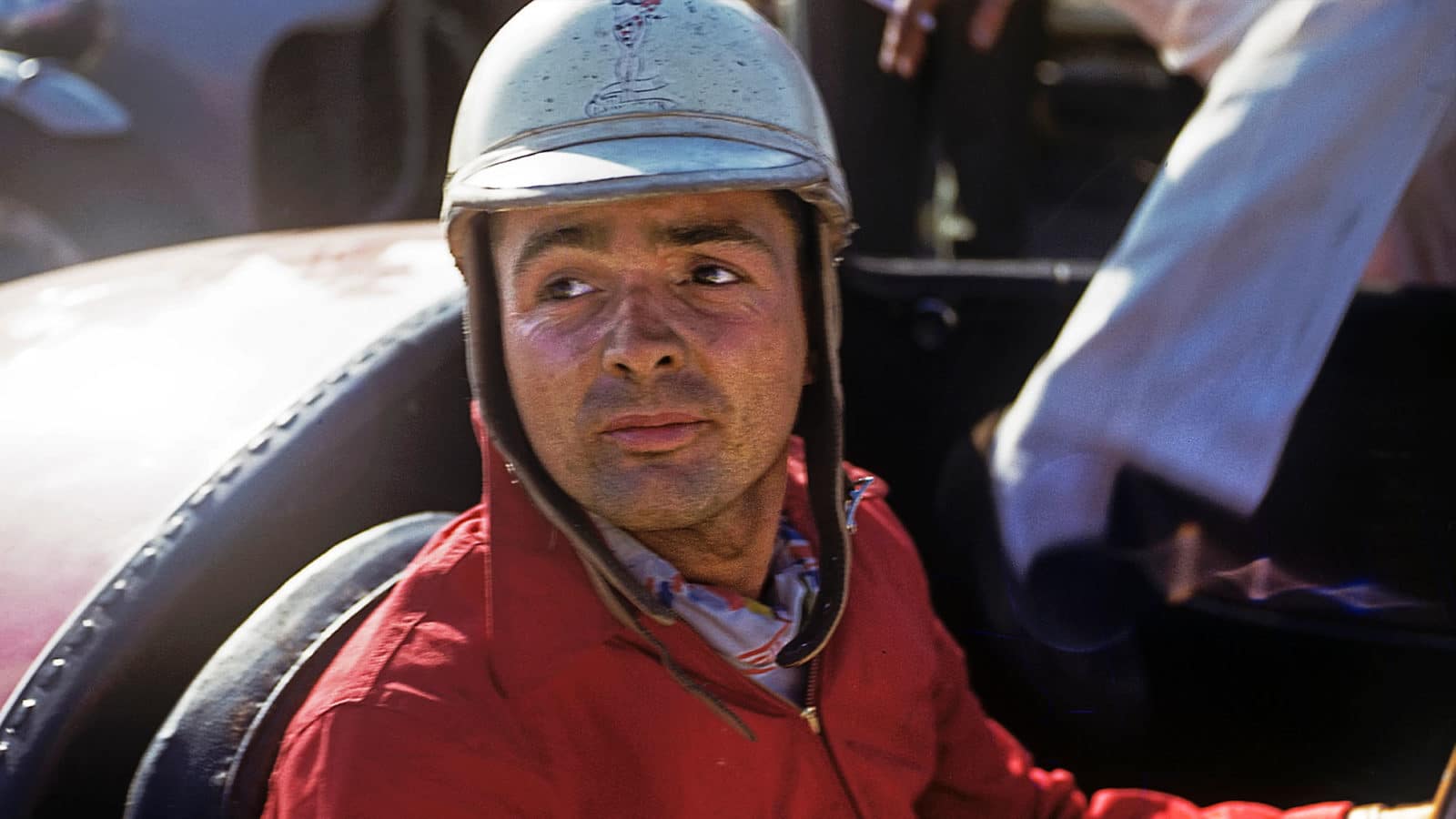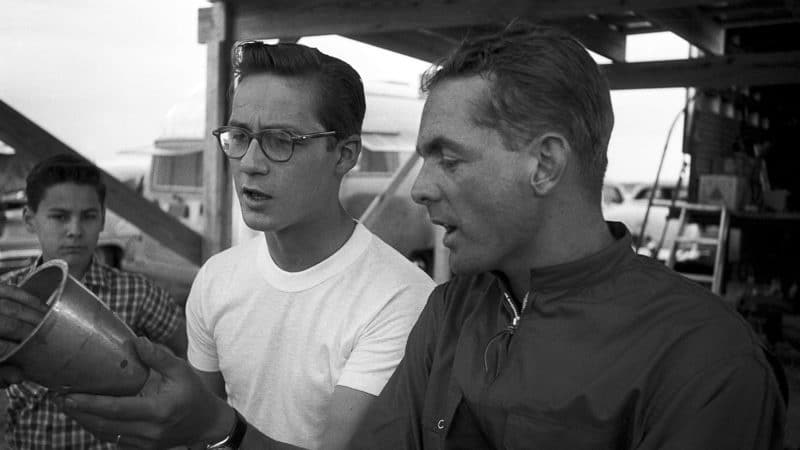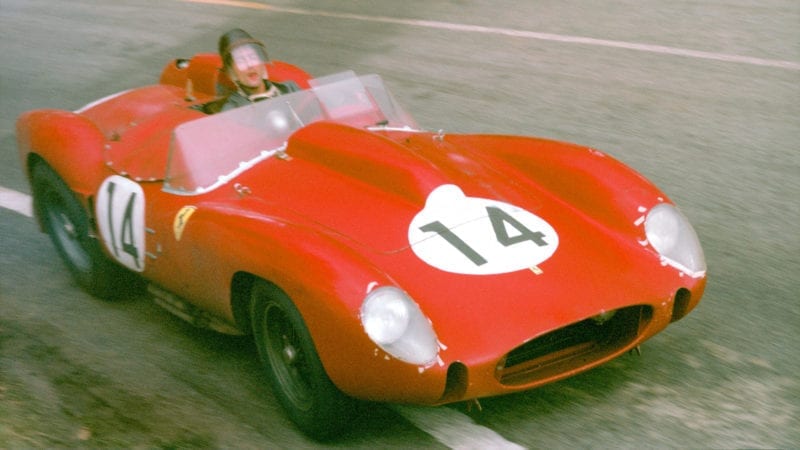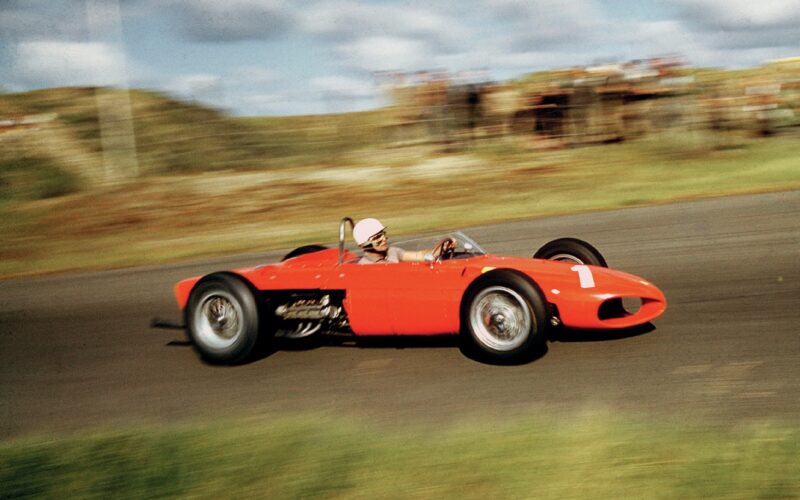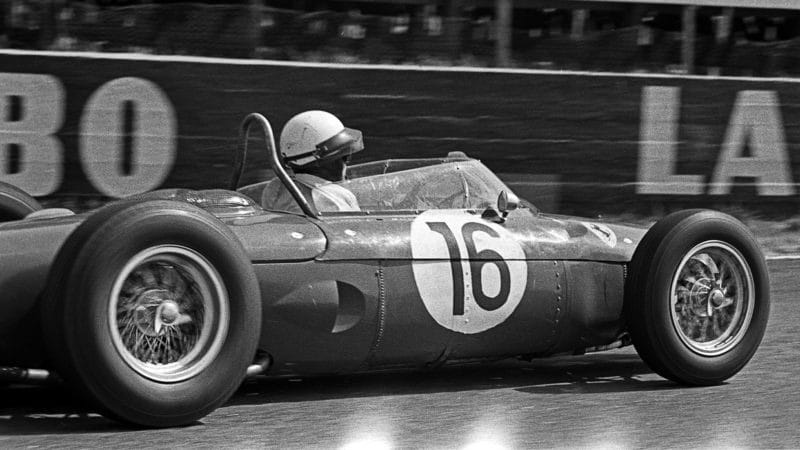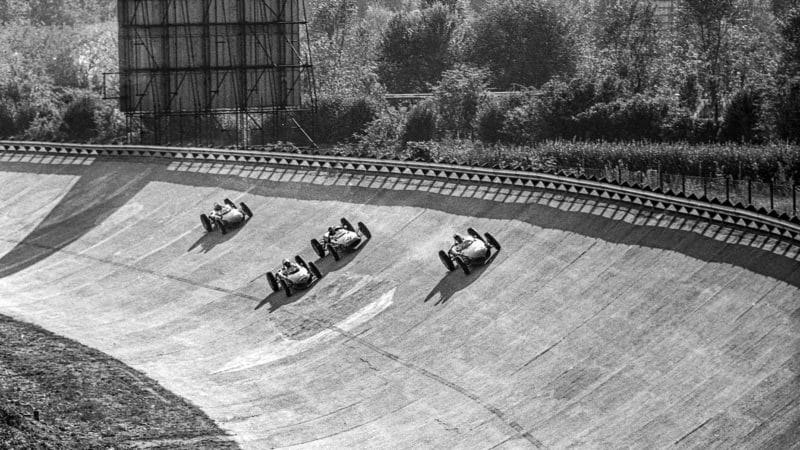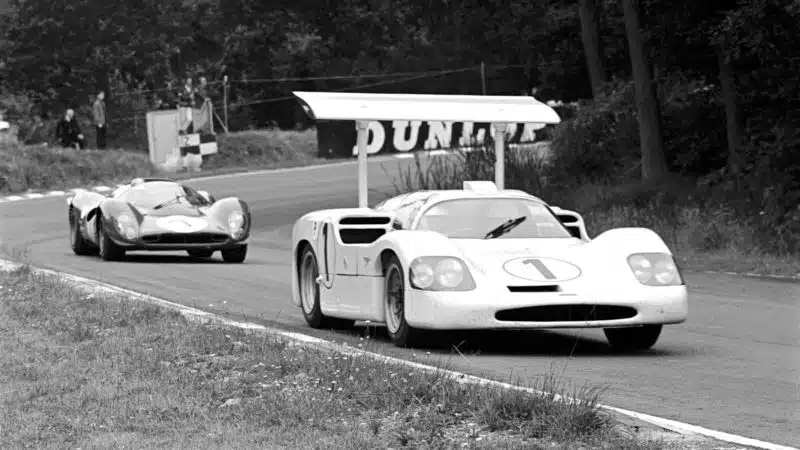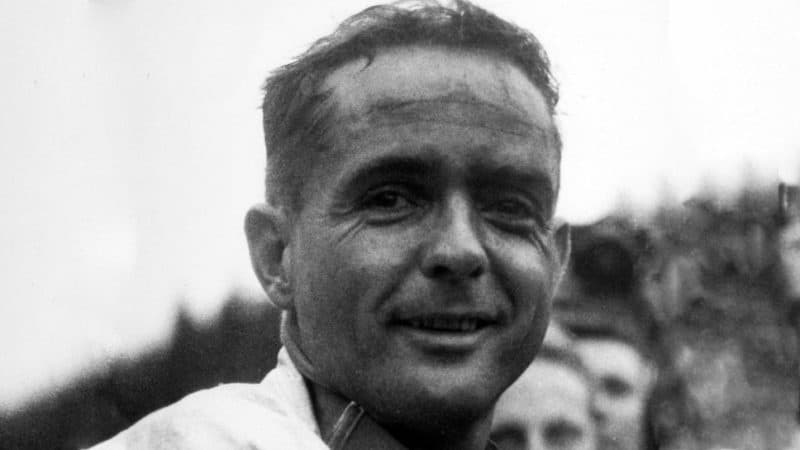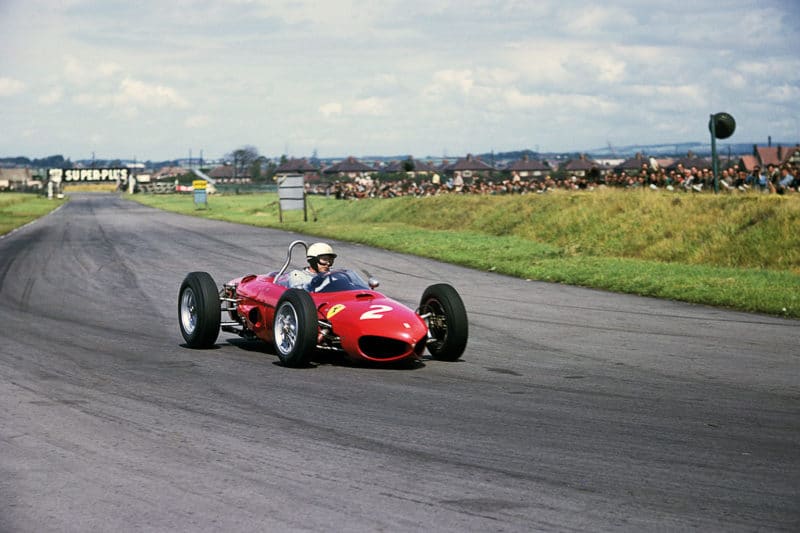By the early 1950s Hill was already an established name in racing with several major sports car wins to his credit. He met Enzo briefly in 1952 when picking up a car with friends and indeed owned a Ferrari himself, a 212 Barchetta which was the first Tour de France winner.
For 1955, aged 28, he had tentatively arranged to race Texan Allen Guiberson’s Ferrari partnered by fellow countryman Richie Ginther when he got ‘The Call’. “I was summoned to Ferrari. I had already met him on a sort of ‘How do you do’ basis in ’53 but Enzo suddenly decided I should do Le Mans with Umberto Maglioli. I waited in a little outer room and then when Ferrari finally came out we were led into the factory and shown the engine on the dyno, a six-cylinder 4.4-litre 121 motor.
“I had been driving 12s and loved them and here was an ordinary six-cylinder but I made all what I thought were the right noises and said the things I thought he wanted to hear, but he was intimidating because he made it so awkward for the interviewee.”
In that fateful race where Pierre Levegh crashed his Mercedes into the crowd, the Hill/Maglioli car retired from third place when a casting fault caused a leak in the water jacket.
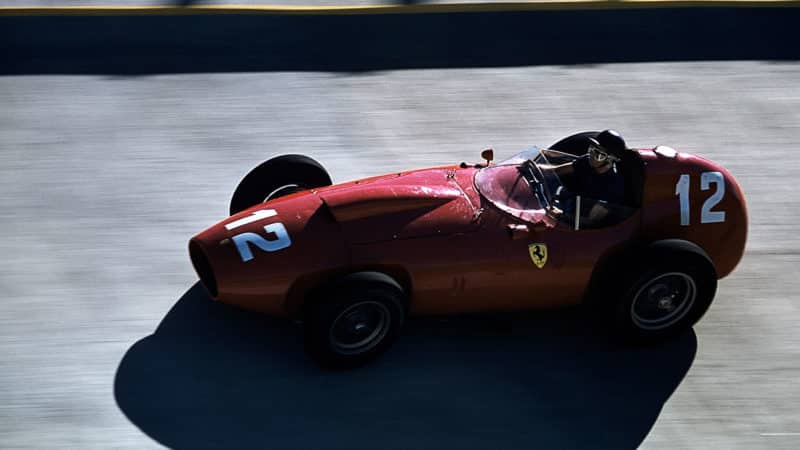
Hill knew Ferrari was fighting a losing battle with front-engined Ferrari
Bernard Cahier / Getty Images
However, although now employed by the factory, a grand prix drive was still some way in the future as he was not yet considered ready. Hill disagreed; “I think he would have got the best out of me then as a Formula 1 driver rather than later.”
Impatient, Hill forced the issue the week after he won Le Mans in 1958 for the first time with Ferrari by hiring Jo Bonnier’s Maserati 250F for the French GP at Reims. “Aspettiamo, vediamo” said Ferrari — “Wait and see”.
With the deaths of Luigi Musso in France and Peter Collins in Germany there were seats to be filled and Hill got the drive.
For 1959 and 1960 Ferrari continued to swim against the tide of the British front-engined evolution as the Coopers of Brabham and Mclaren and the Lotuses of Moss and Ireland swept the board. Permitted bigger engines for their old-fashioned cars, Italian horsepower allowed Ferrari a clean sweep at the AVUS speed bowl in ’59 and Hill took the ’60 Italian GP in the absence of the British teams who boycotted the race over engine regulation changes for the following season. Politics in racing is not a 1990s phenomenon.
But it was the front-engined swansong and for 1961 Ferrari finally built a pusher instead of a puller and gave Hill, Taffy von Trips and Richie Ginther the famous 1.5-litre ‘Sharknose‘.
For Hill, the mid-engined car was a revelation over the front-engined Dinos.
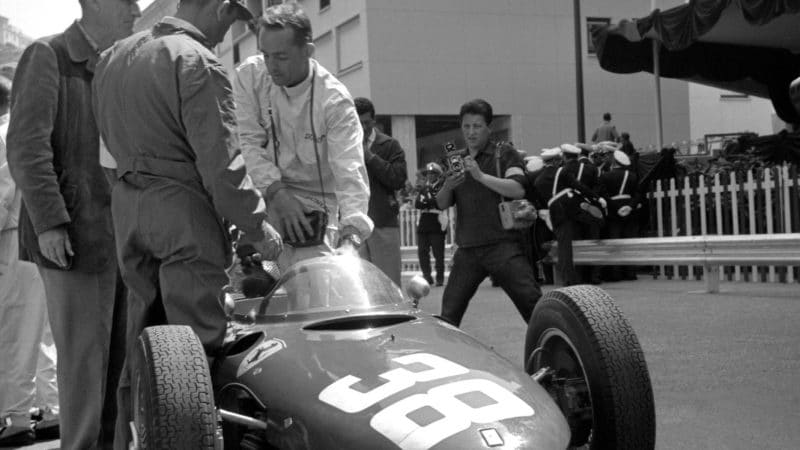
In the pits during ’61
Grand Prix Photo
“We were very late making the switch and the first experience we had with it was towards the end of the 1960 season, at Zandvoort, where we had the 2.5-litre car that Richie had messed with at Monaco that year.
“Now Zandvoort was about the worst place for us in the front-engined car because it felt like we were on the end of a piece of string which was about to fail or be cut. Suddenly being in the rear-engined car that whole aspect had gone because we were up near the stable end of the car and so the feeling was very much better.
